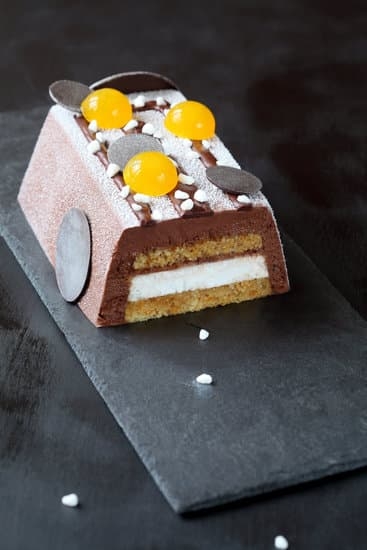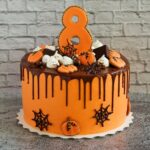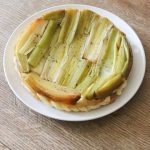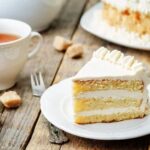What is the best icing for decorating cakes? It’s a question that every baker asks when preparing to create a stunning cake masterpiece. The choice of icing plays a crucial role in the overall look, taste, and texture of the finished product.
In this article, we will delve into the world of cake decorating icings, exploring popular options like buttercream, fondant, royal icing, cream cheese frosting, ganache, and whipped cream. Each type of icing has its unique characteristics and advantages, making it essential to understand which one suits your cake decorating needs best.
Buttercream icing is a beloved choice among many bakers due to its versatility and ease of use in creating various decorative elements on cakes. Its smooth texture makes it ideal for piping intricate designs and adding layers of flavor to cakes.
Fondant icing, on the other hand, offers a professional finish with its smooth and pliable nature that can be molded into elaborate shapes and decorations. Royal icing is favored for its crisp finish and ability to create delicate details on cakes, perfect for intricate designs.
Cream cheese frosting provides a rich and creamy taste that complements both sweet and tangy flavors in cakes while ganache offers a glossy finish and decadent chocolate taste. Whipped cream brings a light and airy texture to cake decorations, adding a fluffy touch to any confection. By understanding the characteristics of each type of icing discussed in this article, you’ll be better equipped to choose the best one for your next cake decorating project.
Buttercream Icing
When considering what is the best icing for decorating cakes, buttercream is often a top contender because it can be flavored with various extracts, fruits, or chocolates to suit different preferences. Additionally, buttercream can be colored using food coloring gels to create vibrant designs or themed cakes for special occasions. Whether you prefer a classic vanilla buttercream or a rich chocolate version, this icing provides endless possibilities for creativity in cake decoration.
Here are some key points about buttercream icing:
- Easy to work with for piping designs
- Can be flavored and colored according to preference
- Maintains its shape well for intricate decorations
Ultimately, when choosing the best icing for decorating cakes, consider the design you want to achieve, the flavor profile you desire, and your level of experience with cake decorating. Buttercream icing offers a balance of taste, texture, and versatility that makes it a go-to choice for both beginners and experienced decorators alike.
Fondant Icing
When working with fondant icing, it is important to keep in mind that it dries quickly once exposed to air. This characteristic makes it ideal for creating decorations ahead of time or covering cakes without worrying about the icing running or melting. Fondant also provides an excellent base for adding edible embellishments like pearls, flowers, or figurines, allowing decorators to customize their creations with precision.
To enhance the flavor of fondant icing, many bakers opt to add extracts or flavorings such as vanilla, almond, or citrus zest. While fondant is often praised for its aesthetic appeal and workability in decorating cakes, some may find its texture too chewy or sweet. It is essential to consider both the visual impact and taste preferences when deciding whether fondant is the best icing for decorating your cakes.
- Smooth finish
- Versatile for intricate designs
- Dries quickly for easy handling
- Can be flavored with extracts
- Provides a base for edible embellishments
- Customization options
- Aesthetic appeal
- Texture considerations
- Taste preferences
Royal Icing
When it comes to intricate and detailed cake decorations, royal icing is often the go-to choice for many bakers and decorators. This type of icing is known for its ability to create crisp lines, intricate designs, and delicate decorations on cakes. Made from a mixture of powdered sugar, egg whites, and sometimes lemon juice or cream of tartar, royal icing dries hard, making it perfect for creating elaborate designs that hold their shape.
One of the key advantages of using royal icing for decorating cakes is its versatility. Whether you’re looking to create lace-like patterns, piped flowers, or intricate borders, royal icing can help you achieve a professional finish on your cakes. Its smooth consistency makes it easy to work with, allowing for precise detailing and embellishments that can elevate the overall look of your cake.
Another benefit of royal icing is its long-lasting properties once dried. Unlike other types of icing that may soften or melt at room temperature, royal icing sets firm and retains its shape even in warmer conditions.
This makes it ideal for decorative elements that need to stay put on a cake without smudging or losing definition. With the right techniques and tools, the possibilities are endless when it comes to using royal icing to create stunning decorations on your cakes.
Cream Cheese Frosting
One of the advantages of cream cheese frosting is its versatility in terms of decorating techniques. Whether you prefer a simple smooth finish or intricate piping designs, this type of icing can be easily manipulated to achieve your desired look.
Its creamy texture holds up well when piped onto cupcakes or layered between cake tiers, making it a great option for both beginners and experienced bakers alike. Additionally, cream cheese frosting pairs well with a variety of cake flavors, including carrot cake, red velvet cake, and spice cake.
When considering what is the best icing for decorating cakes, cream cheese frosting is often chosen for its luxurious taste and smooth texture. However, it is important to note that this type of icing may not hold up as well in warmer temperatures compared to buttercream or fondant.
To ensure the stability of cream cheese frosting decorations, it is recommended to keep the decorated cake refrigerated until ready to serve. Overall, if you are looking for a delicious and visually appealing icing option for your next cake decoration project, cream cheese frosting could be the perfect choice.
Ganache
The glossy sheen of ganache adds a touch of sophistication to any cake decoration, making it perfect for special occasions like weddings or birthdays. Whether poured over a cake for a mirror glaze effect or spread evenly as a frosting, ganache provides a polished finish that will impress both visually and in taste.
Additionally, ganache can be easily colored with food gel or flavored with extracts to customize the icing according to the desired theme or flavor profile of the cake.
When choosing the best icing for decorating cakes, ganache stands out for its decadent taste and professional look that can transform any homemade creation into a bakery-worthy masterpiece. The versatility of ganache allows it to be used for various cake decorating techniques, from simple drips and swirls to intricate piping work.
Whether you’re looking to add elegance to a wedding cake or simply indulge in a rich chocolate treat, ganache proves to be a top contender among the best options available for icing cakes beautifully.
Whipped Cream
Benefits of Using Whipped Cream as an Icing
One of the key benefits of using whipped cream as an icing option for decorating cakes is its light texture, which pairs well with delicate sponge cakes or fruity flavors. Whipped cream can also be easily piped into decorative swirls, peaks, or borders to add an elegant touch to your cakes.
Additionally, whipped cream can be stabilized with ingredients like gelatin or powdered sugar to help it hold its shape for longer periods, making it suitable for layered cakes or desserts that require refrigeration.
Tips for Decorating Cakes With Whipped Cream
When using whipped cream as an icing for cake decoration, it is important to ensure that the heavy cream is cold before whipping it to achieve stiff peaks. Adding sugar gradually while whipping will help maintain the stability of the whipped cream and prevent it from deflating.
For best results, decorate your cake with whipped cream shortly before serving to preserve its texture and visual appeal. Consider incorporating fresh fruits, edible flowers, or chocolate shavings as garnishes to enhance the overall presentation of your whipped cream-decorated cake.
Comparing Different Icings
When it comes to decorating cakes, choosing the right icing is crucial for achieving the desired look and taste. Each type of icing offers unique characteristics that cater to different preferences and styles.
From buttercream to fondant, royal icing, cream cheese frosting, ganache, and whipped cream, there are various options available for cake decoration. Understanding the differences between these icings in terms of taste, texture, and ease of use is essential in selecting the best one for your cake decorating needs.
Buttercream icing is a popular choice among bakers due to its versatility and ease of use. It can be flavored and colored in numerous ways, making it suitable for various designs and decorations on cakes. Buttercream has a smooth texture that is easy to spread and pipe, allowing for intricate designs and details. However, it may not hold up well in warm temperatures compared to other types of icing.
On the other hand, fondant icing provides a sleek and professional finish to cakes, creating a clean canvas for intricate decorations. Fondant can be rolled out thinly to cover cakes smoothly or molded into elaborate shapes for added flair. While fondant offers a polished look ideal for special occasions, some people find its taste too sweet or artificial compared to other icings.
| Category | Description |
|---|---|
| Buttercream Icing | Versatile & easy to use with smooth texture; may not hold up well in warm temperatures. |
| Fondant Icing | Provides sleek & professional finish; taste may be too sweet or artificial for some. |
Tips for Decorating With Icing
Choose the Right Consistency
When it comes to decorating cakes with icing, one of the most important factors to consider is the consistency of the icing. Different techniques require different consistencies – for intricate piping work, a thicker icing is ideal, while for smooth finishes, a thinner icing works best.
To achieve the perfect consistency, adjust the amount of liquid or powdered sugar in your icing recipe until you reach the desired texture. This simple step can make a world of difference in the final look of your decorated cake.
Use Piping Bags and Tips
Investing in a set of quality piping bags and tips can take your cake decorating skills to the next level. Whether you’re creating intricate designs or simply adding borders to your cake, using the right piping tip can make all the difference. Experiment with different tips to see which ones work best for your desired design. Additionally, practicing different piping techniques can help improve your precision and control when working with icing.
Embrace Texture and Layering
Don’t be afraid to play with texture and layering when decorating cakes with icing. From creating ruffles and waves to adding dimension with multiple layers, incorporating various textures can elevate the visual appeal of your cake. Try using different tools like spatulas, combs, or even toothpicks to create unique patterns and designs.
Mixing and matching different icings or combining them with other decorations like fondant or edible flowers can also add depth and interest to your cake design. The key is to experiment and have fun exploring different techniques to see what works best for your vision.
Conclusion
In conclusion, choosing the best icing for decorating cakes ultimately depends on the desired outcome and personal preferences. Buttercream icing remains a popular choice due to its versatility, making it suitable for various decorating techniques from simple swirls to intricate designs. Fondant icing, with its smooth finish and professional look, is perfect for creating elegant and clean designs on cakes. Royal icing offers a crisp finish and allows for intricate detailing, making it ideal for more elaborate decorations.
Cream cheese frosting provides a rich and creamy texture that adds a luscious element to cake decorating, while ganache offers a glossy finish and decadent taste that can elevate the overall look of a cake. Whipped cream, with its light and airy texture, is another option for those looking for a simpler yet delicious icing choice. When choosing the best icing for decorating cakes, consider not only the taste but also the ease of use and desired design outcome.
Frequently Asked Questions
What Frosting Do Professionals Use?
Professionals often use buttercream frosting for decorating cakes due to its versatility and ability to hold intricate designs well. Buttercream can be easily piped into various shapes, making it ideal for professional cake decorators.
What Is the Best Frosting for Decorating a Cake?
The best frosting for decorating a cake depends on personal preference and the desired outcome. However, many cake decorators prefer using Swiss meringue buttercream for its smooth texture and ability to hold intricate decorations. Swiss meringue buttercream is also less sweet than traditional frosting, allowing the flavors of the cake to shine through.
Is Frosting or Buttercream Better for Cake Decorating?
When it comes to cake decorating, buttercream is often considered better than traditional frosting. Buttercream offers more stability when piping intricate designs or creating elaborate decorations on a cake. Additionally, buttercream can be easily colored and flavored, giving decorators more options to customize their creations.

Welcome to our cake decorating blog! My name is Destiny Flores, and I am the proud owner of a cake decorating business named Cake Karma. Our mission is to provide delicious, beautiful cakes for all occasions. We specialize in creating custom cakes that are tailored specifically to each customer’s individual needs and tastes.





